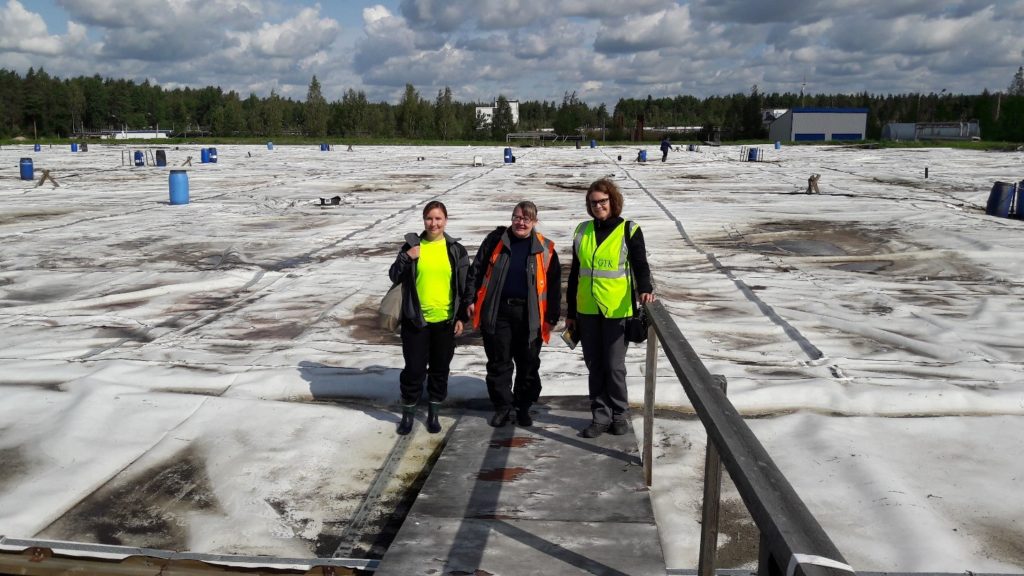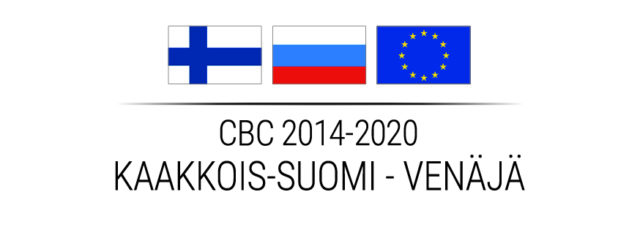A Joint Project Assessing the Environmental Impacts of Krasny Bor Hazardous Waste Landfill
The EnviTox project develops tools and recommendations that support good environmental status, risk management and sustainable development in the area surrounding the Krasny Bor hazardous waste landfill. Its purpose is to provide information and share good practices for decision-makers and land use planning.

The Krasny Bor hazardous waste landfill is located in the Leningrad Region, Russia, about 30 kilometres from St. Petersburg. The landfill was opened in 1969, and an estimated 1.5 million tonnes of various industrial waste was transported to the area before the landfill was shut down in 2014. The landfill was established on top of nearly 100 metre-thick clay layer from the Cambrian Period. About 70 waste pools of different sizes were dug into this layer for liquid waste materials.
The depth of these waste pools varies from a few metres to up to 24 metres. Today, the pools have mostly been covered and no more waste is transported into the area. However, some of the pools filled up before the area was closed, and the pools have occasionally flooded due to heavy rain and melt water. In addition, some dams in the area have been damaged, as a result of which waste has discharged into collection ditches and, possibly, spread to the surrounding environment. The area was also used for waste combustion.
The region is located in the catchment area of the Neva River, and there are concerns that potential overflows and other factors detrimental to the environment will threaten the water services of St. Petersburg, as they are dependent on water intake from the Neva. – Jaana Jarva, Geological Survey of Finland
“Krasny Bor is a Hot Spot area classified by HELCOM, the Baltic Marine Environment Protection Commission. The region is located in the catchment area of the Neva River, and there are concerns that potential overflows and other factors detrimental to the environment will threaten the water services of St. Petersburg, as they are dependent on water intake from the Neva. In addition to the hazardous waste landfill, the Krasny Bor area has many different industries and two unofficial waste dumping spots”, explains Jaana Jarva, Chief Scientist at the Geological Survey of Finland.
Cross-border Cooperation as the Goal
The goal of the ‘Environmental Impacts of the Krasny Bor Toxic Waste Landfill’ (EnviTox) project is to review the environmental condition of the surroundings of Krasny Bor hazardous waste landfill. These studies will then be utilised for a risk assessment of potential environmental impacts and to compile recommendations of the monitoring and rehabilitation needs in the surrounding areas as well as suitable rehabilitation methods. The project is used to share experiences and good practices on the research methods used to review and monitor the state of the environment in Finland and Russia.
The project will focus on the conditions of the area surrounding Krasny Bor. The researched area is 65 km² in size, and is bordered by the Tosna and Izhora rivers. Soil, sediment, groundwater and surface water samples have been taken from the area to study the state of the environment. The samples have been analysed for a wide range of harmful substances, which previous reviews have shown the landfill waste to contain.
The Project Was Launched with Area and Sampling Studies
In the first sampling stage in 2019, the aim was to form an overall view of the research area and the occurrences and concentrations of harmful substances. In connection with the sampling process, the researchers also observed the area’s geology and land use, for example. These observations were utilised for interpreting the analyses results and planning the next, targeted sampling stage. Finnish partners participated in the first sampling round. This allowed reviewing of the agreed sampling methods and making the necessary changes to them.
“The second round of sampling in 2020 focused on areas identified as potential risks in an attempt to learn more about them. Unfortunately, the COVID-19 pandemic prevented the Finnish partners from taking part in the second round, and the sampling plans had to be made via online meetings. The results of the second sampling round have not yet been completed, but an additional sampling round for this summer has now been planned based on the initial results. Its purpose is to assess the state of the environment and support the risk assessment”, relates geologist Tarja Hatakka from the Geological Survey of Finland.
The EnviTox project is funded by the South-East Finland – Russia (ENI CBC 2014–2020) cooperation programme, which supports cross-border project operations with funding from the European Union, Finland and Russia. The project is coordinated by SC Mineral, which operates under the auspices of St. Petersburg’s Committee for Nature Use, Environmental Protection and Ecological Safety. Other Russian project partners are the Institute of Limnology and the Institute of Precambrian Geology and Geochronology of the Russian Academy of Sciences. In addition to GTK, the University of Applied Sciences of South-Eastern Finland takes part in the project from Finland. The project will end in February 2022.
More Information
EnviTox Project Website
GTK Open File Work Report 62/2019: EnviTox – Guidelines for Sampling, Analysis and Quality Assurance

